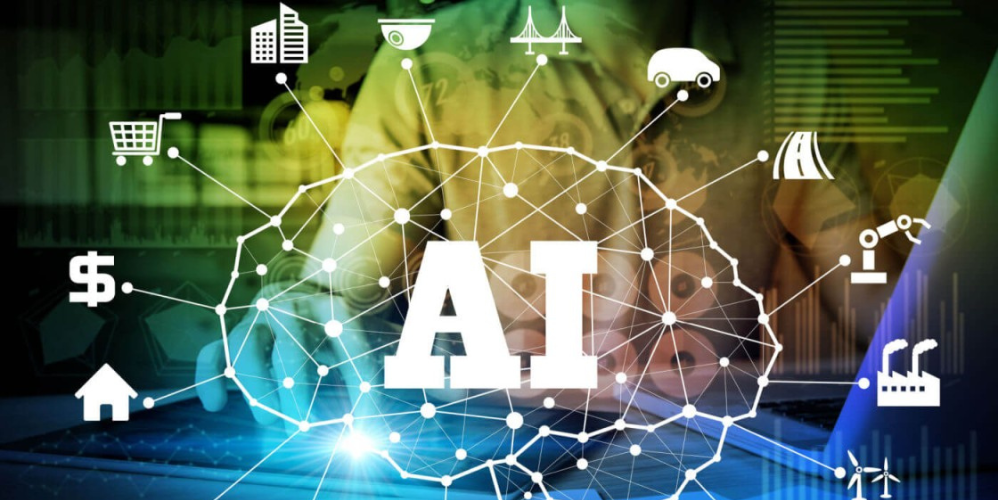What Is Artificial Intelligence And How Does It Work? :- In today’s world, Artificial Intelligence is used in many different areas. It is used in software to give it the capability of making decisions that a human would normally make. It is also used in medical research, to help doctors find better treatments for their patients. Artificial intelligence can be found everywhere from Siri on your iPhone to Watson being used by IBM to help doctors diagnose cancer more efficiently. Find out more about what artificial intelligence really is and how it works in this article!
Table of Contents
What is Artificial intelligence?
In recent years, artificial intelligence (AI) has become one of the most popular topics in both the scientific and lay communities. But what is AI? Simply put, AI is the application of cognitive science techniques to artificially create something that performs tasks that only humans can perform, like reasoning, natural communication, and problem solving.
With the rapid advancements in technology, AI has become more sophisticated and can now be used for more complex tasks such as facial recognition and identification, driving cars, and even diagnosing diseases. Currently, there are two types of AI: weak AI and strong AI. Weak AI is also sometimes called narrow AI because it is designed to perform one specific task. Strong AI, on the other hand, is also known as general artificial intelligence because it has the ability to learn any intellectual task that a human being can do.
Types of Artificial Intelligence
There are three primary types of artificial intelligence:
1. Reactive Machines
Reactive machines are the simplest form of AI, and they are based solely on reacting to their environment. They do not have the ability to learn or make decisions on their own – they simply respond to stimuli in a predetermined way.
2. Limited Memory Machines
Limited memory machines are slightly more complex than reactive machines, as they can remember and use information from past experiences to inform future decision-making. This type of AI is often used in robotic devices that need to autonomously navigate an environment, like self-driving cars.
3. Generalized AI Machines
The most advanced form of AI is generalized artificial intelligence, which has the ability to learn and make decisions on its own without any human input or intervention. Generalized AI machines are still in development and are not yet widely used.
How does AI work?
AI systems are designed to learn and work on their own, making decisions based on data. They use a variety of techniques to do this, including machine learning, which is a method of teaching computers to learn from data without being explicitly programmed.
In general, AI systems are built using a combination of algorithms and statistical models that enable them to process, understand, and act on data. This can be done in a number of ways, but the most common approach is to use artificial neural networks. Neural networks are computer systems that are modeled after the brain and nervous system, and they are able to learn by example.
There are many different types of AI systems, but some of the most common include:
- Autonomous vehicles
- Virtual assistants
- Fraud detection
- Speech recognition
- Predictive analytics

Read About Also The Best Cloud Computing To Secure Your Data
Why do we need AI and why is it important?
AI is important because it can help us automate repetitive tasks, freeing up time for other activities. It can also help us make better decisions by providing us with more accurate and up-to-date information. Additionally, AI can improve our communication with other people and machines, making it possible to interact with them in more natural and effective ways.
AI has the potential to revolutionize how we live, work, and play. But why do we need AI, and why is it important?
There are many reasons why AI is important, but one of the most fundamental is that it can help us solve problems that are otherwise too difficult or too costly for humans to solve alone. For example, AI can help us find new cures for diseases, develop more efficient and sustainable energy sources, manage our natural resources more effectively, and even help us plan for and respond to natural disasters.
AI can also help us automate tasks that are currently performed by humans, freeing up time for other activities. For instance, self-driving cars powered by AI could reduce traffic congestion and accidents, while robots in warehouses could speed up the delivery of goods. And as AI gets better at understanding and responding to human emotions and behavior, it could eventually become our personal assistants, helping us with everything from managing our schedules to finding new restaurants we might like.
In short, AI has the potential to make our lives easier and improve the world around us in a number of ways. That’s why it’s important – not just for businesses or governments, but for all of us.
Future of Artificial Intelligence
The future of artificial intelligence (AI) is both immensely exciting and somewhat uncertain. On the one hand, businesses and individuals are already beginning to reap the benefits of AI-powered automation and its ability to boost efficiency and productivity. On the other hand, as AI continues to evolve and become more sophisticated, there is a risk of it becoming increasingly complex and opaque – making it difficult for humans to understand or control.
In the coming years, we are likely to see more AI applications in areas such as healthcare, finance, transportation, and manufacturing. As AI gets better at understanding and responding to the complexities of the real world, its capabilities will continue to increase, which is likely to result in increased economic value creation. With that said, it is also important to note that AI will not replace humans entirely; rather, it will complement our existing skills and abilities to help us achieve even greater things.
Conclusion
Artificial intelligence is a vast field that is constantly evolving. In this article, we have only scratched the surface of what AI is and how it works. However, we hope that this has given you a better understanding of the basics and piqued your interest in learning more. If you want to explore AI further, there are many resources available online and in libraries. With so much information out there, the possibilities for what you can do with AI are endless.
